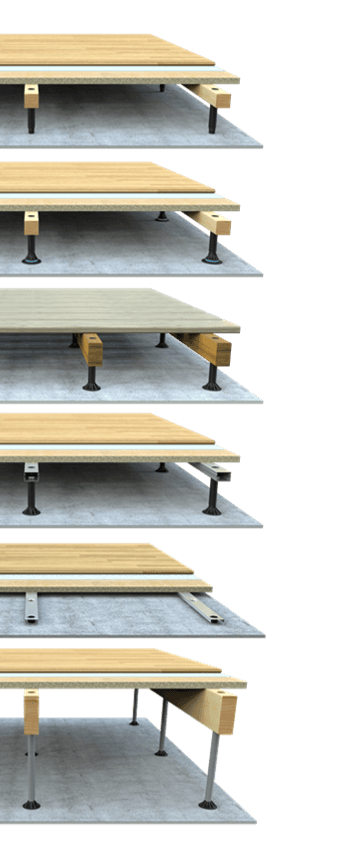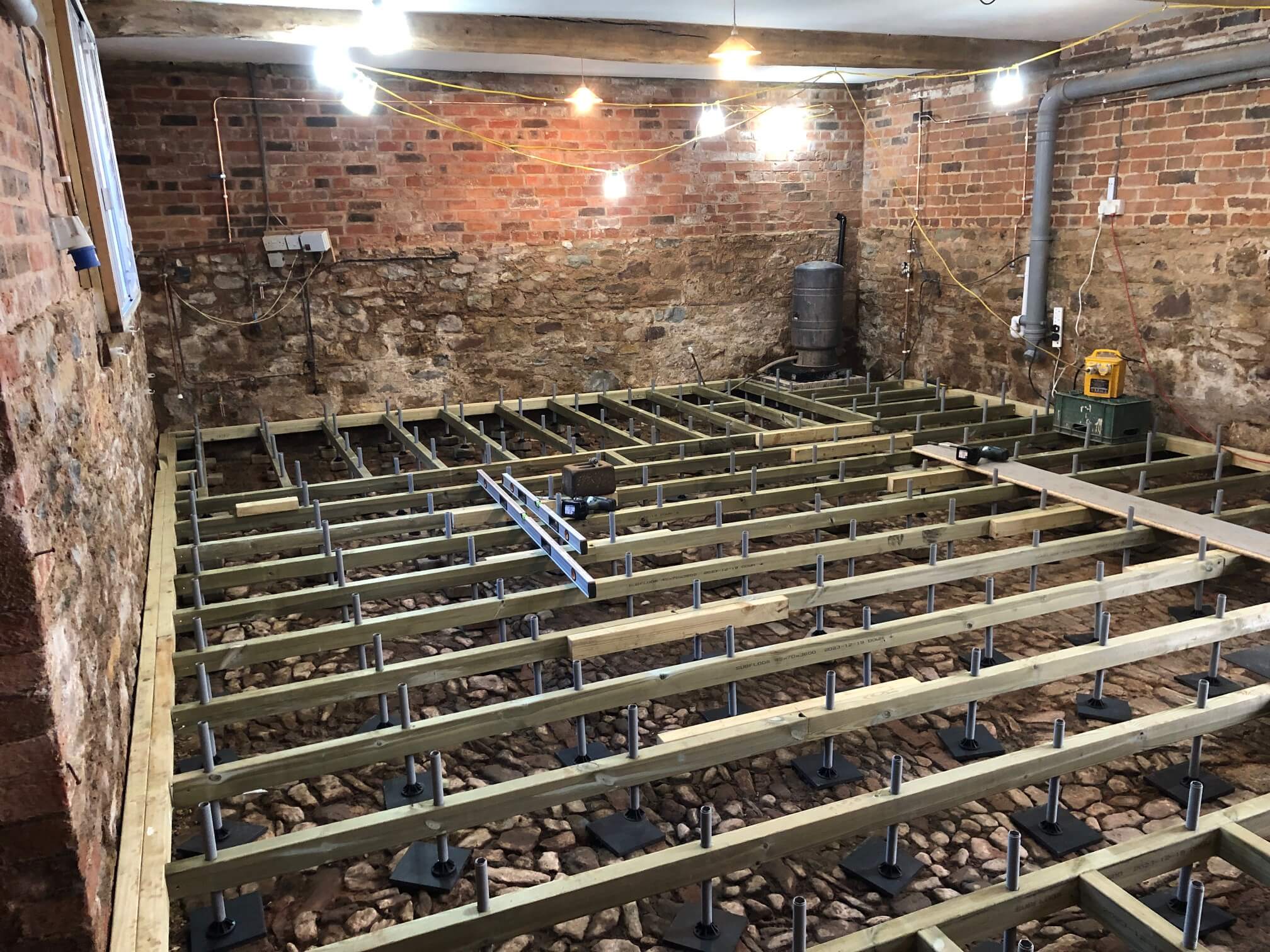Revitalizing a Historic Cider Mill Cellar with SubFloor
SubFloor raised flooring was used to renovate, raise and level a 43 m² cellar floor into a flat and dry storage space in a 16th Century Cider Mill.
Location: 16th-century Cider Mill
Space: 43 sqm loft area
Initial Condition: Uneven, cobbled, and damp floor
Goal: Level the floor, protect original cobbles, and create storage space
Products:
Pre-treated Wooden Joist 45 x 70 x 3600 mm
Subfloor Screw 300 mm
Screw Foot
Construction:
Joist separation: 400 mm centres
Building height: 65– 314 mm
Data:
System weight: 5.92 kg/m²
Uniformly Distributed Load:
9.32 kN/m² - Between screws
7.96 kN/m² - Over screw at joist edge
Materials:
Pine T0-C24
Fibre-reinforced Vitamide
Polyamide
Project Overview
The owners of a historic cider mill wanted to convert a damp, cobbled cellar into a practical storage space while preserving its original flooring. The cellar’s uneven and damp nature presented significant challenges, and the solution needed to respect the building's heritage status.
Challenges
- Preservation of Original Flooring: The cobbled flooring was a significant feature of the cellar, requiring a solution that avoided damage.
- Uneven and Damp Conditions: The existing floor's uneven and damp characteristics needed a robust solution to provide a level, moisture-resistant base.
- Compliance with Heritage Requirements: The renovation needed to align with the stringent guidelines of the Planning Authority and Historic England.
Solution: SubFloor System
The SubFloor system was employed to address these challenges. The pressure-treated wooden joists, spaced at 400 mm centers, were used in conjunction with SubFloor Screws and Screw Feet to provide a level and secure flooring solution without altering the cobbled base.
Benefits of Using SubFloor
- Preservation of Original Features: The design allowed the original cobbled floor to remain untouched, preserving the historical integrity of the space.
- Effective Moisture Management: The raised floor design helped manage the dampness of the cellar, ensuring a dry, usable storage area.
- Robust and Durable Solution: The SubFloor system’s sturdy construction guaranteed a reliable surface capable of supporting substantial storage loads.
- Compliance with Regulations: It met all necessary planning and heritage regulations, providing a sensitive approach to a historically significant building.
Customer Testimony
"I am so impressed with your innovative product, so simple in concept, easy to install, and incredibly robust in final application. Most importantly, it meets the very strict requirements of the Planning authority and Historic England, allowing us to convert our loft and ancient Cider Cellar into habitable spaces whilst preserving the engineering and architectural aspects of our lovely 16th-century home."
Conclusion
This successful project demonstrates the SubFloor system’s capability to transform damp and uneven historical spaces into functional areas, all while preserving the original character of the building.
The SubFloor system was installed by JW Construction, who provided excellent, precise, and client-focused construction services for this project. They are based in Herefordshire, Worcestershire, and Gloucestershire. For further information or contact details, please follow this link to visit their website.
Get in Touch
Contact us to learn how the SubFloor system can be customized to your specific renovation needs, ensuring both modern functionality and historical preservation.
Project Gallery




Some of our other SubFloor projects…

















